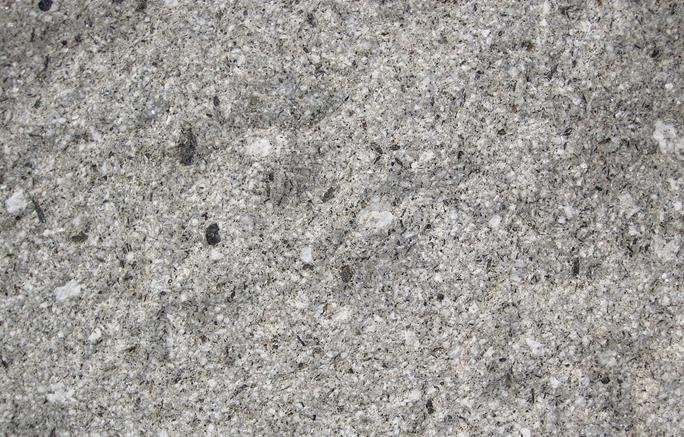Andesitic magma or lava has an intermediate composition with moderate silica content between 57 and 63 wt. %. Its composition and properties lie between felsic and mafic magmas.
Felsic magmas are enriched in lighter elements like silicon, oxygen, sodium, potassium, aluminum, or minerals.
On the other hand, mafic are rich in darker elements like magnesium and iron or their minerals.

Properties of andesitic magmas
- Density: 2.4-2.5g/cm3
- Volatile content: 3-4%
- Eruption temperature: 900 and 1100 °C (1652 and 2012 °F).
- Viscosity: Viscosity is the resistance to flow. These rocks have moderate viscosity, about 3.5 × 106 cP (3,500 Pa⋅s) at 1200°C (2192°F)
How do andesitic magma form?
Andesitic magma forms mostly at volcanic arcs (island and continental). Smaller amounts can also form in continental rifts and hotspots.
These magmas form in two main ways:
- Fractional crystallization of basaltic magmas: Elements with higher melting points, like olivine and amphiboles, will progressively crystallize and separate from the melt. This will gradually alter the melt composition.
- Partial melting of subcrustal rocks: When rising basaltic magma underplates crust, it can cause partial melting of crustal rocks of mostly lower temperature components.
- Metasomatized mantle partial melting: High magnesium andesite in island arcs that form boninites are primary magmas from a metasomatized mantle. Metasomatized means chemically altered by fluids, including hydrothermal.
- Magma mixing: Mixing of rhyolitic and basaltic magmas can produce magmas of intermediate composition like andesite.
How does andesitic magma eruption
Andesitic magmas erupt explosively and effusively at 900 and 1100 °C (1652 and 2012 °F). Both effusive and explosive eruptions can happen during a single eruption.
For instance, reducing volatiles will change an explosive eruption to effusive. The reverse is also true. However, most eruptions will start explosively and become effusive towards the end.
Sometimes, explosive and effusive eruptions can alternate, forming composite volcanoes. These are large, tall, steep-sided volcanoes with a conical shape.
Examples of those associated andesitic eruptions in the US include Mt. Shasta in California, Mt. Hood in Oregon, and Mt. Rainer, Adam, and St. Helens in Washington. Others are Mt. Redoubt and Novarupta in Alaska.
Note that these composite volcanoes can have other magmas, including dacite, rhyolite, or basalt.
1. Explosive eruption
Explosive eruptions occur when magma is high in gases. It will violently blast gas, ash, scoria, lapilli, and other rock fragments, including lithic. Lithic originates from country rock, not erupting magma.
Explosive eruptions are mostly Strombolian or sometimes Vulcanian type. More explosive eruptions like Plinian happen in more viscous magmas like dacite or rhyolite.
However, explosive phreatomagmatic and phreatic can happen if magma or hot volcanic material interacts with water.
Lastly, explosive eruptions will deposit andesitic tuff, agglomerates, or scoria, depending on their vascularity.
2. Effusive eruptions
Effusive eruptions occur when andesite magmas are low in gases. These magmas quietly ooze out of vents or fissures, forming aa or blocky lava flows.
Also, they can form andesitic lava domes. For instance, Soufrière Hills Volcano on Montserrat formed a series of domes from 1995 to the present, with subsequent eruptions destroying them.
